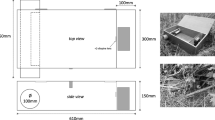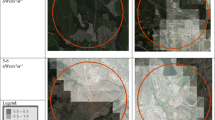Abstract
Blackbucks (Antilope cervicapra) are extinct in the wild in Pakistan and are maintained in captivity at diverse places. The present study reports the behavior of a herd of blackbucks (40 individuals in 2–4 random groups) maintained in three-acre enclosure at the Wildlife Complex, Pirowal, District Khanewal, South Punjab, Pakistan. The time spent in locomotion, resting, sleeping, sitting, fighting, aggression, feeding, and rumination was recorded by the naked eye and camera for thirty minutes on alternate hours for three consecutive days in different seasons (1080 min in each season) throughout the year. In a total observation period of 90 h, blackbuck males, females, and fawns were found to spend 22.8%, 27.5%, and 19.9% of their time walking, respectively. Walking was more extensive during the spring and monsoon. Running was more common in males, especially in dominant males, and during the post-monsoon period. Sitting was more frequent in the summer and less in the spring and monsoon. Salt licking was also observed in adults but rarely in fawns. Fighting was more common in mature males. Adults spent more time feeding compared to fawns. Rumination was related to sitting time and was more frequent in adults compared to fawns. The blackbucks largely retained their wild behavior in captivity. In an enclosure with little seasonal variation, flock size remained constant.The behavioral activities and time budgeting in different seasons and at different times of the day differed modestly between the fawn and the adults. Besides, there were sexual character differences.
Similar content being viewed by others
References
Ali, Z., F. Bibi, A. Mahel, F. Firdous, and S. Zamaan. 2011. Captive Breeding Practices in Pakistan: A Review. Journal of Animal and Plant Sciences 21: 368–371.
Archunan, G. 2009. Vertebrate Pheromones and Their Biological Importance. Journal of Experimental Zoology, India 12: 227–239.
Archunan, G., and T. Rajagopal. 2013. Detection of Estrus in Indian Blackbuck: Behavioural, Hormonal and Urinary Volatiles Evaluation. General and Comparative Endocrinology 181: 156–166.
Asif, M., and S. Modse. 2015. Crop Damage by the Blackbuck Antilope cervicapra in and around Chitta Reserve Forest of Bidar, Karnataka. International Journal of Life-Sciences Scientific Research 2: 500–505.
Davies, N.B., J.R. Krebs, and S.A. West. 2012. An Introduction to Behavioural Ecology. Sussex: Wiley.
Isvaran, K. 2007. Intraspecific Variation in Group Size in the Blackbuck Antelope: The Roles of Habitat Structure and Forage at Different Spatial Scales. Oecologia 154: 435–444.
Jarman, P., and M. Jarman. 1973. Social Behaviour, Population Structure and Reproductive Potential in Impala. African Journal of Ecology 11: 329–338.
Jayarani, T., K. Kalyanaraman, and M. Balakrishnan. 1988. Sequential Patterns of Behavior in The Black Buck, Antilope Cervicapra (Linnaeus). International Journal of Comparative Psychology 1: 197–205.
Jhala, Y.V., and K. Isvaran. 2016. Behavioural Ecology of a Grassland Antelope, the Blackbuck Antilope cervicapra: Linking Habitat, Ecology and Behaviour. In The Ecology of Large Herbivores in South and Southeast Asia, ed. F.S. Ahrestani and M. Sankaran, 151–176. Dordrecht: Springer.
Khanal, P. 2002. Study on Ecology, Behaviour and Habitat Options for Conservation of Last Remaining Blackbuck Population in Nepal by Using GIS. Kathmandu University, Dhulikhel.
Klein, D.R., and N. Fairall. 1986. Comparative Foraging Behaviour and Associated Energetics of Impala and Blesbok. Journal of Applied Ecology 23: 489–502.
Meena, R., and V. Chourasia. 2018. Influence of Anthropogenic Activities on Blackbuck Population at Sorsan Region of Baran District, Rajasthan. International Journal of Advance Research in Science and Engineering 7: 463–469.
Meena, R., R.P. Saran, and V. Chourasia. 2017. Population Characteristics, Habitat Availability, Forage Preferences and Threats to the Blackbuck Antilope cervicapra (Linn) in the Sorsan Region of Baran, Rajasthan. World Journal of Zoology 12: 53–59.
Mungall, E.C. 1978. The Indian Blackbuck Antelope: A Texas View. Texas: Texas Agricultural Experiment.
Priyadarshini, K. 2005. Interactions Between Forage, Recruitment and Activity Patterns of the Indian Blackbuck. Gujrat: Saurashtra University.
Rajagopal, T., R. Rajkumar, P. Ponmanickam, S. Achiraman, P. Padmanabhan, and G. Archunan. 2015. Identification of Pheromone-Carrying Protein in the Preorbital Gland Post in the Endangered Indian Male Blackbuck Antelope Cervicapra L. Indian Journal of Expimental Biology 53: 771–779.
Ranjitsinh, M.J. 1989. Indian Blackbuck. Dehradun: Natraj Publishers.
Ruckstuhl, K.E., A. Mian, T. Akhtar, and T.P. Rooney. 2012. Distribution, Population Size, and Structure of Himalayan Grey Goral Naemorhedus Goral Bedfordi (Cetartiodactyla: Bovidae) in Pakistan. Mammalia 76: 143–147.
Vats, R., and C. Bhardwaj. 2009. A Study of Reproductive Behaviour of Indian Black Buck (Antilope Cervicapra) Linn. with Reference to Courtship, Breeding, Fawning and Colouration. Current World Environment 4: 121–125.
Acknowledgements
Authors acknowledge the Wildlife department, Punjab, Pakistan for providing the facilities to conduct this research.
Funding
This study review does not receive any funding in any form. This work is the product of the author's efforts.
Author information
Authors and Affiliations
Contributions
ZF and MI, collect and analyze the data MSK, design the research and write the manuscript, MW supervises the research and handles the Correspondence, SA selected literature and finalize the manuscript.
Corresponding author
Ethics declarations
Conflict of interest
The authors declare that they have no conflict of interest.
Ethical Approval
This study was approved by the ethical review board of the University.
Additional information
Publisher's Note
Springer Nature remains neutral with regard to jurisdictional claims in published maps and institutional affiliations.
Rights and permissions
About this article
Cite this article
Farooq, Z., Iqbal, M., Khan, M.S. et al. Circadian Variation in Activities of Blackbuck Under Captivity in Punjab, Pakistan. Proc Zool Soc 75, 242–246 (2022). https://doi.org/10.1007/s12595-022-00438-1
Received:
Revised:
Accepted:
Published:
Issue Date:
DOI: https://doi.org/10.1007/s12595-022-00438-1




